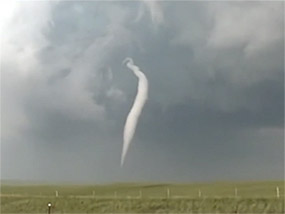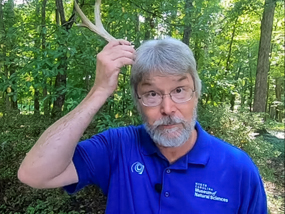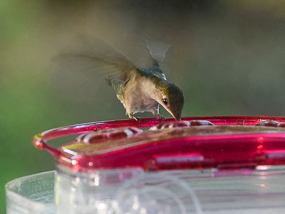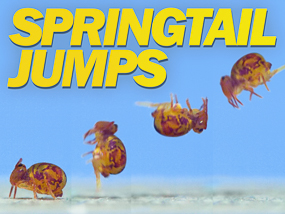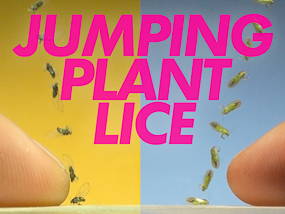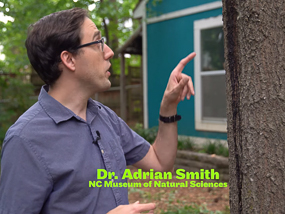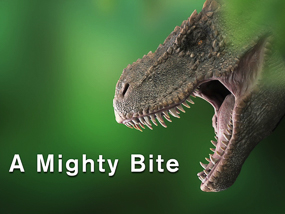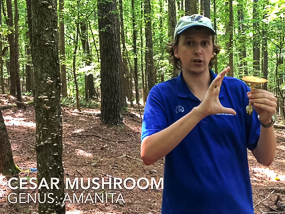Videos by Topic: Astronomy • Conservation • General Science • Biology:
Birds · Bugs & Other Inverts · Fishes · Mammals · Paleontology · Plants & Fungi · Reptiles & Amphibians
Channels | Playlists
Featured Video
Drone Flies Through Two Whales! Museum One-shot Tour
Fly through the Museum in downtown Raleigh in this one-shot drone tour. Experience NCMNS like never before as you zoom through the world-class institution that brings research, events and educational programs to North Carolina and beyond. View the Museum’s whales, dinosaurs and SECU Daily Planet Theater from a whole new vantage point!
https://bit.ly/PlanYourVisitNCMNS
Astronomy
Celebrating Hubble Space Telescope’s 30th Anniversary
- Dr. Rachel Smith, Head of the NCMNS Astronomy & Astrophysics Research Lab, will focus on some of the great discoveries of exoplanets, star forming regions, and the incredible new insights from Hubble on our moons and the outer solar system objects!
- Dr. Patrick Treuthardt, Assistant Head of the NCMNS Astronomy & Astrophysics Research Lab, will discuss what the Hubble Space Telescope has shown us about the galaxies in our universe and the Universe as a whole.
Does Venus Show Us What Ancient (and Future) Earth Looks Like?: Learn about our sister planet, Venus. Dr. Paul Byrne discusses our current understanding of the evolutionary history of Venus and how that understanding informs our view of our own world, and the fate that may await it!
Join us for a journey from Earth to space as we explore the scientific search for life beyond our planet in the Science Cafe Earth and Beyond: The Search for Life in the Universe! Using new interactive software called OpenSpace as our virtual spaceship, Dr. Rachel Smith takes you from our planet to potentially habitable worlds in the solar system, and then beyond as we consider the search for extraterrestrial intelligence. Rachel also shares some of her recent observations of forming stars in our Galaxy using NASA’s Infrared Telescope Facility in Hawaii.
Conservation
Connecting to Conservation: NCMNS mammalogist Dr. Stephanie Schuttler spoke about how we can reconnect with nature, especially with kids. She also shared the results of her worldwide camera trap study on mammals conducted by kids. Watch and get an introduction to programs that you can participate in to help connect you to nature while helping scientists collect important biodiversity data.
Earth Day Science Stream-a-Thon
It’s a science party for Earth! Hear experts in fields from astronomy to zoology chat about the state of the planet, science, biodiversity and conservation. Each of our special guests dropped in to share their research and why it’s important. Earth Day Science Stream-a-Thon Details
Home Sus-STAY-IN-Ability: Unique Challenges and Opportunities. Join us virtually on Earth Day for an online program focused on sustainability challenges and opportunities, featuring guest speakers from the City of Raleigh. Key topics included home sustainability challenges such as the use of single-use plastics; cost savings in home energy; how to plan and execute home sustainability projects; activities for kids and more. Following their brief presentations there was a facilitated panel discussion and Q&A.
Prescribed Burns at Prairie Ridge Ecostation: Wildfires can be destructive events for forests, prairies, and other ecosystems, but they can also benefit the environment in several ways. Periodic, intentionally set fires — or prescribed burns — are used to deliver these benefits while minimizing the more harmful impacts of fires. In this video, find out how fires can help maintain certain natural habitats, and how prescribed burns are conducted at the Museum’s Prairie Ridge Ecostation.
Climate Change in North Carolina: We begin with State Climatologist Kathie Dello discussing findings from a recent report that says North Carolina will be hotter, wetter, and more humid in the future. What changes might you see in your backyard? How can we prepare for a rapidly changing North Carolina? What can you do about climate change here in our home state?
Science Cafe: Landscaping Inspired by Nature: These days, it seems like everyone’s sprucing up their yards. If you’re planning a landscaping update, consider introducing sustainable features, such as native plants that attract bees, butterflies, or other pollinators. Three members of the Coastal Landscapes Initiative, an effort to support nature-enhancing landscaping, will offer tips on how to create a yard that’s beautiful, functional, and environmentally friendly. The strategies can be used wherever you’re planting.
General Science
Naturally Curious With Bob Alderink: Investigating Inertia (Open captions)
Having difficulty getting moving? Maybe you just have a lot of inertia. What’s inertia you may ask? Well, it’s a property of matter and it really matters. Sir Isaac Newton certainly knew the importance of inertia and he was the first to describe it in detail. In this experiment we will use an apple, a dowel and a hammer to demonstrate the exciting and seemingly magical properties of inertia!
Naturally Curious With Bob Alderink: The Surprising Strength of Eggs: If someone tells you “you’re as strong as an egg!,” you may not feel complimented; but you should! Try crushing a chicken egg in your hand and you’ll be very surprised how strong an egg actually is. In this video we go way beyond the forces an egg would normally encounter by piling on heavy iron weights to try to crush the seemingly fragile egg.

Naturally Curious With Bob Alderink: Making Fire With Friction: For most of us, learning our native plants is purely a matter of botanical interest or simply the love of nature. However, for thousands of years our ability to identify wild plants was a matter of survival. Some plants provided food, some medicine, while others could even be used for making fire. Learn to identify some common North Carolina plants that may appear to have passed their prime but turn out to be perfect for creating fire!
Naturally Curious With Bob Alderink: A Light in the Wilderness: Hundreds of years ago if you needed a light source, a trip to the nearest pond or marsh was all that was required. There you would find and collect the Common Rush, a common plant with an uncommon history. This plant of soggy environments, when collected, dried and soaked in grease, provided a candle-like light to illuminate the households of the poor. Watch the video to learn how to make your own rush light!
Shapes in Nature: A quick look around the natural world reveals some interesting and repeated shapes. One of the most common shapes you’ll find in nature is the curve. From bird eggs to turtle shells, and even the human skull, curves abound in nature. In this video we will see what other common shapes emerge and how human technology has harnessed nature’s design to build stronger bridges, homes and other structures.
From the Natural World Lab: Tornado Families: Did you know that a powerful thunderstorm can produce not just one tornado, but several over the course of its life cycle? A series of tornadoes spawned by the same storm cell is known as a tornado family, and is a common feature of many of the most significant tornado events throughout history, including ones that have affected North Carolina.
From the Natural World Lab: The Nitrogen Cycle: Nitrogen is the most abundant element in the Earth’s atmosphere, and an important nutrient to all living things. This video describes how processes in both the atmosphere and the soil convert nitrogen gas into compounds that plants and animals can use.
Extreme Weapons: A Natural History: Every animal has a weapon of one sort or another, but the overwhelming majority of weapons stay small. Yet, sprinkled through the tree of life are species where weapons become extreme. Occasionally, human-manufactured weapons also evolve to extremes. In this Science Cafe, Douglas J. Emlen reveals that the same critical conditions trigger arms races in both cases, and the most crucial prerequisite is duels. A journey that begins with biology becomes the story of all weapons, as Emlen discusses beetles and battleships, crabs and the Cold War.
Quantum computing! It’s a buzz phrase that’s all over the place, from social media to the news. Come learn about what it is (really good at solving big problems) and what it isn’t (a way to make your internet browsing faster). Dr. Lex Kemper will explain how we can use it to solve big problems in physics research and advance our understanding of the universe around us. Watch Teen Science Cafe: Quantum Computing here!
Biology
Naturally Curious: Making an Impression: How to Cast Animal Tracks
In nature, wild animals are often secretive and difficult to see, especially for we loud and clumsy humans. Fortunately for us, these creatures often leave visible clues of their travels behind them. Animal tracks offer fantastic but temporary clues to the wildlife in your area. In this video we will learn how to create a lasting record of the animal tracks you find during your outdoor excursions using easy-to-find, easy-to-carry materials.
Mystery of the Missing Bones (YouTube)
The creatures of the woods are everywhere! Birds flying overhead, squirrels scrambling up tree trunks, and deer frolicking between trees. They are born here, live their lives here, and of course, die here. Yet where are their bones? Join award-winning educator Bob Alderink to discover the answer to this skeletal mystery.
Why Are Museum Collections Important?
Why Are Museum Collections Important? Join us for a conversation with Museum Director, Eric Dorfman, and learn about the significance of the Museum’s collections of natural science specimens. From 1879 through today, the rich history of NCMNS collections gives us perspectives on nature in the past, the present and, most importantly, the future as we work to conserve the planet’s biodiversity.
Learn about bioluminescence vs. fluorescence in this Facebook video! It runs about 24 minutes, with an additional 12 minutes of Q&A at the end.
Whiteville Storytime: Am I a Skunk? (Facebook video)
Join us on a quest to answer one animal’s very important question. What creatures might our critter meet along its journey through some of the special habitats of southeastern NC? Find out in our story! After the story, set off on your own comparison quest to explore nature and learn about the similarities we humans have with so many different kinds of living things. Comparison Quest PDF
Birds
Ruby-throated Hummingbirds in North Carolina: The Ruby-throated Hummingbird is the only hummingbird that breeds in the eastern North America. North Carolina’s ruby-throats usually begin migrating south in late summer, while birds from further north continue to pass through North Carolina into October. They can hover and fly in any direction, and beat their wings more than 50 times per second! This territorial little bird, once attracted to a feeder, will likely spend hours of the day nearby, guarding its precious sugar-water.
Feathered Friends: Learn About Ornithology
The Museum’s collection of bird specimens hails from the 1800s and resides 44 feet below ground, housed in specialty archival cabinetry. Join us for “Stories from the Underworld” as told by Brian O’Shea and John Gerwin, our staff ornithology research curators.
Journey North Hummingbirds(Facebook video): The Journey North citizen science project tracks the migration of several animals, including hummingbirds. You can help researchers learn more about the movements of hummingbirds by sharing the ones you see. Our newest Citizen Science Adventures video covers how to participate in the Journey North hummingbird project, how to attract hummingbirds to your yard, and the species we have right here in North Carolina.
Science Cafe: What It’s Like to Be a Bird: From Flying to Nesting, Eating to Singing: Birders and nonbirders alike! The Museum partnered with Quail Ridge Books to help you gain a new and deeper understanding of what the wide variety of common backyard birds are doing … and why. David Allen Sibley describes his observations of our familiar backyard birds that are highlighted in his new book “What It’s Like to Be a Bird: From Flying to Nesting, Eating to Singing” (#1 New release in bird field guides). Your backyard will never seem the same again.
World Curlew Day talk (April 21): Museum ornithologist and Collections Manager Dr. Brian O’Shea spoke about special shorebirds called curlews for World Curlew Day. Learn about curlews’ epic migrations and how they (and other shorebirds) are faring amid the pressures of the modern world. There’s a discussion of extinction with the story of the Eskimo Curlew, a story similar to that of the Passenger Pigeon. Brian also spoke about novel tracking technologies that have given us new insight into the ecology and behavior of curlews.
Bugs & Other Inverts
7 Spectacular Moths in Slow Motion
“Whose day isn’t gonna be better after watching a pink and yellow Rosy Maple Moth fly in super-slow motion?” Take off flight sequences captured by Dr. Adrian Smith at 6,000 fps! All the moths in this video were collected and filmed in Cornish, NH between July 12-16. All moths were released after filming.
The Invention of Ant Nest Architecture
Walter Tschinkel created the field of underground ant nest architecture research. Dr. Adrian Smith, Head of the Museum’s Evolutionary Biology & Behavior Research Lab visited with him to get the story on how this work started and get a personal tour of the gadgets, gizmos, and processes he uses to make metal casts of ant nests.
Dr. Adrian Smith, Head of the Museum’s Evolutionary Biology & Behavior Research Lab, has posted a new video showing off-water jumps of the semi-aquatic collembola Sminthurides aquaticus and solid ground jumps of Dicyrtomina minuta captured in slow motion video, filming at speeds over 73,000 frames per second! These animals are fast and incredible!
Insect Flight: 11 Incredible Species in Slow Motion (YouTube)
Dr. Adrian Smith says, “Takeoff and flight sequences of insects spanning 5 different taxonomic orders captured at 3,200 fps!” See the video on YouTube for more details.
Jumping Plant Lice | World’s Fastest Front-flipping Insects (YouTube)
From Adrian Smith in the Ant Lab: Jumping plant lice, or psyllids, are the fastest front-flipping insects, but not many people know about how amazing they are! Dr. Smith set out to film the high-flying flips of these plant-feeding, often thought of as “pest”, insects. They are hemipterans in the superfamily Psylloidea and are often referred to as “psyllids.” Most of the shots, unless otherwise labeled in the video, were captured at 3,200 frames per second.
Insect Flight | Capturing Takeoff & Flying at 3,200 FPS (YouTube)
From Dr. Adrian Smith in the Ant Lab: Takeoff and flight sequences of insects spanning 8 different taxonomic orders captured at 3,200 fps!
Jumping Hoppers in SLOW MOTION!
From Dr. Adrian Smith in the Ant Lab: “Leafhoppers, treehoppers, planthoppers, and froghoppers are all insects in the order Hemiptera that are some of the fastest jumping animals on earth! They are also super-common, so I collected a bunch and filmed their jumps in slow-motion!”
Malacology: Chasing the Wild Freshwater Mussel!
Join in our conversation with Research Curator Art Bogan to discover some incredible facts about freshwater mussels. Acting as Mother Nature’s filtering system in rivers and lakes, these surprisingly charismatic, highly endangered and often overlooked creatures are sure to amaze you!
Get in the summer spirit with one of our favorite symbols of the season: fireflies. Learn all about these flashy figures and how to “speak” firefly in this week’s Storytime, “Blinking Beetles: Fireflies from A-Z.” (Facebook) After the story, practice your firefly communication in your own home!
Citizen Science Adventure: Firefly Watch (Facebook): Do you love fireflies? If so, Firefly Watch is the citizen science project for you! It asks participants to make observations of fireflies — the flash patterns and number of flashes you see — and report them to Firefly Watch to help scientists learn more about firefly behaviors, distributions, and populations. This video that covers how to collect and submit data, the differences between firefly types you may encounter, and why fireflies light up.
Firefly Watch Chat: On Friday, June 5 at 2:30pm, join NCSU’s Clyde Sorenson and the Museum’s Chris Goforth for a lively chat about all things firefly and the value of YOUR observations to scientists. Get answers to your questions live and learn all about these amazing bioluminescent insects from experts. Register for Firefly Watch Chat (Zoom)
Then on Friday, June 5 at 8:30pm, we’ll have live video from Prairie Ridge in Fireflies on the Prairie (Facebook).
Incredible Slime-Eating Insects: Slime Flux BioBlitz: From Dr. Adrian Smith in the Ant Lab: An inventory of insects that showed up in a six-day, 46-hour timelapse of a tree oozing slime flux. Fifteen species appeared and some really neat predator-prey encounters were captured on film!
Fuzzy, Buzzy, Bumble Bees: In this Whiteville Storytime video on Facebook, learn all about our important pollinator friends with Museum educator Meredith Morgan. After the story, set off on your own Pollinator Prowl to find pollinators in action around your home!
From the Natural World iLab: Arthropod Molting In this video, we take a look at ecdysis — the process by which growing arthropods generate new, larger exoskeletons and shed their old ones.
Do your kids like bugs? Get your “Bug On” this week in this story celebrating our tiny animal neighbors! Learn about fascinating bug behaviors in the video storytime, “Bug On!”, written by NCMNS Whiteville Education Specialist Meredith Morgan. Look for bugs around your own home, and share your photos of them with us on the Whiteville Facebook page!
From Adrian Smith @ the Ant Lab: How do trap-jaw ants perfectly time their snaps? When trap-jaw ants are dropped, before they hit the ground they snap their jaws and fling themselves back up into the air! How do they manage to perfectly time their snaps to do that? Why do they do it? It’s all thanks to four little hairs that stick out of their mouths called “trigger hairs”!
In “Arachnids eating crickets!” view a curlyhair tarantula, an emperor scorpion and a desert hairy scorpion feasting on crickets. With Wade Harrell of the Harrell House Bug Museum at BugFest 2017.
In “Why Carpenter Bees Drill Holes in Houses,” Museum educator Bob Alderink gives us the inside scoop on the world’s first soccer moms, the Xylocopa.
From the Natural World iLab: Pollinators: Learn about some native bees and incidental pollinators of the southeastern United States.
Fishes
What is Ichthyology?
What is Ichthyology? Join us for this program about the world of fishes! From freshwater to saltwater, there are more species of fish found in the world than in any other vertebrate group. Meet Research Curator Alex Dornburg and Collections Manager Gabriela Hogue and learn about the sheer diversity of this fascinating group of animals.
Science Cafe: Everything I Needed to Know in Life I Learned From a Shark: Lessons From a Marine Biologist with Dr. David Shiffman. Shiffman is a marine conservation biologist who studies sharks, and he’s based in Washington, DC. An award-winning public science educator, he’s written about sharks, marine biology, and ocean conservation for the Washington Post, Scientific American, and writes a monthly column in SCUBA diving magazine. He is one of the most-followed scientists in the world on social media, and invites you to follow him on Facebook, Twitter, and Instagram @WhySharksMatter , where he’s always happy to answer any questions anyone has about sharks.
Mammals
Science Cafe: Meet the Charismatic Megafauna An Introduction to Some of the World’s Rodents and Why They Matter with Curator of Mammalogy Mike Cove.
Paleontology
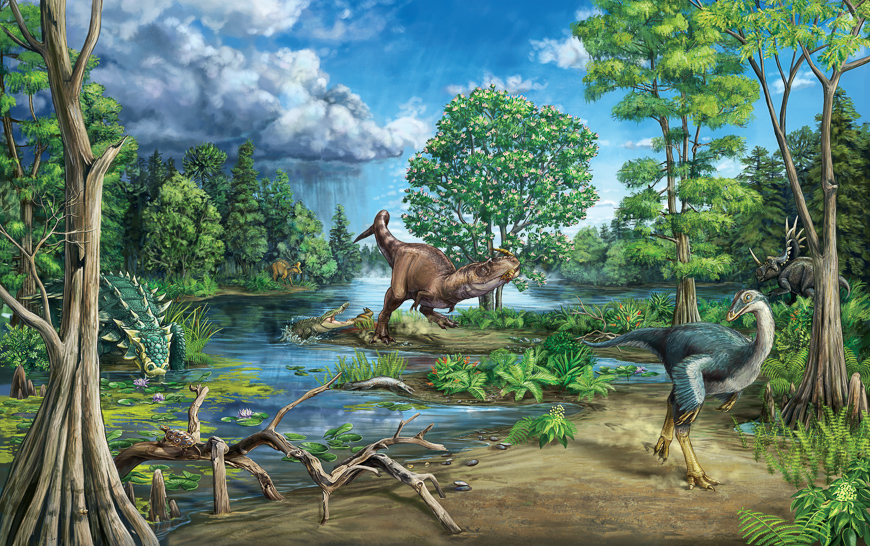 Illustration by Danielle Dufault.
Illustration by Danielle Dufault.
Naturally Curious With Bob Alderink: — T. rex: A Mighty Bite (YouTube)
One look at a Tyrannosaurus rex skull will tell you that this impressive animal had a very powerful bite. But just how powerful was it? In this video we will learn the latest estimate paleontologists have calculated for the bite force of an adult T. rex. In addition, we’ll see that this updated estimate provides answers to its eating habits. We will also compare this estimated bite force with that of living animals today, including humans. Be prepared for a few surprises!
Science Cafe: Sorting Out the World of Dinosaurs — What do dinosaur fossils, sediment from ancient wetlands, and lasers have in common? They can be combined to uncover what ecosystems looked like millions of years ago. Join NCMNS paleontologist Thomas Cullen as he discusses his research, and what it can tell us about where dinosaurs lived, what species they lived with, and how their ecosystems responded to changing environments.
In “Dino Brain vs. Walnut,” Bob shows how to figure out the relative sizes of 1) a Diplodocus brain, and 2) a walnut! (Diplodocus was one of the giant vegetarian dinosaurs known as sauropods.)
Special thanks to: Lawrence Witmer, PhD, Ohio University and Lindsay Zanno, PhD, North Carolina Museum of Natural Sciences and NC State University.
Plants & Fungi
Fun With Fungi (Facebook video)
North Carolina is home to many species of mushrooms, but many people know very little about them. Did you know there are mushrooms that can be used as tinder for fires? Or that there’s a mushroom that oozes a dark blue “milk” when cut? Get an introduction to the mushrooms and learn about some of the many fascinating species you can find all around us in this video filmed at Prairie Ridge Ecostation.
Venus Fly Trap Closing: The closing of Venus fly traps occurs when small hairs located on the traps’ pads are triggered, usually by the movement of an insect. It takes two or more trigger events in short sequence to cause the trap to close so that it can avoid closing when there is no prey present. This short video shows the rapid movement of a trap as it is triggered, both at normal speed and in slow motion.
From the Natural World iLab: Tree Seed Dispersal. In this video, we explore how seeds from trees travel to the idea places to germinate and grow.
Reptiles & Amphibians
Releasing Rehabilitated Green Sea Turtles into the Ocean
We are at the coast of North Carolina releasing two sea turtles back into the wild. A handful of these green sea turtles that were cold-stunned over the winter came to the Museum to get medical treatment and to be rehabilitated to go back into the ocean, and today we’re releasing two of them: 03 “Diamond” and 059 “Topaz.”
The Scaly and the Slimy: Meet the Reptiles and Amphibians
Join us for a conversation with Research Curator Bryan Stuart to learn about the history and research going on with several North Carolina species in the NCMNS collection, including the endangered coral snake and the identification of a new species of two-lined salamander!
Herp, Herp, Hooray! Storytime
“Herp, Herp, Hooray! Let’s hear it for herps” is written by Museum Education Specialist Meredith Morgan. Learn all about reptiles and amphibians in North Carolina and learn how to safely observe them outside your own home by making a cover board. From the Whiteville Facebook page.
North Carolina is home to 37 species of snakes — however, only six of these are venomous, and considered dangerous to humans. Learn how to recognize and coexist with venomous snakes in this video from the Natural World Investigate Lab! For more information about North Carolina’s venomous snakes, see the NC Snake FAQ.
Channels
North Carolina Museum of Natural Sciences
The Museum’s official YouTube channel.
The Ant Lab
Find out about Florida’s skull collecting ant or exactly how ant stingers work in this collection of videos from Museum entomologist Adrian Smith.
Playlists
Naturally Curious With Bob Alderink
Learn how to make a rush light or how powerful a T. rex bite was, or solve a mystery in your own backyard!
NC Museum Week 2020
Learn all about the Museum’s collections from the people who manage them.
Science Cafe Bites
Get a soundbite of science from our weekly Science Cafes!
Science Cafes
When a soundbite isn’t enough, watch our full Science Cafe videos here.
LIVE from the Museum
Learn about the science of monster myths, how to create your own hen habitat and much more in this archived collection of presentations from the Daily Planet Theater and Science Café.
Daily Life at the Museum
Watch dinner time for the two-toed sloth or learn about our snail baby project in these short clips.
A Moment of Science
Enjoy these short educational snippets of natural science, from cochineal bugs to woodpecker tongues.
Teen Newsroom
Science videos produced by students in the Teen Newsroom program at the Museum. For additional info, please visit http://naturalsciences.org/learn/teens.
Audience Favorites
Bugling elks, chimney swifts and vinegar eels …
You Won’t Believe
From a Chupacabra to an albino deer, Museum biologist Roland Kays tries to sort out some camera trap mysteries.


